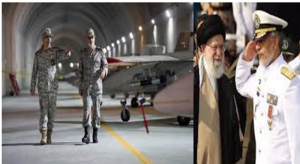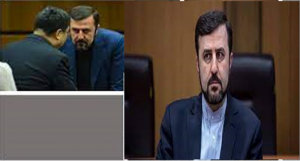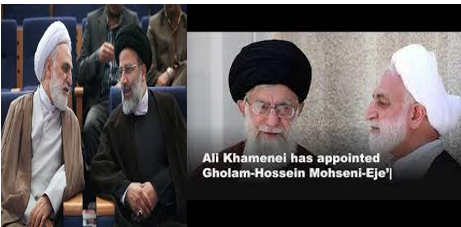
In a recent speech in Mashhad, Habibollah Sayyari, the deputy of the Islamic Revolutionary Guard Corps’ (IRGC) Intelligence Organization, highlighted a longstanding conflict between the Iranian regime and the People’s Mojahedin of Iran (PMOI/MEK).
This struggle, extending over four decades, was brought to the forefront when Sayyari recalled, “Forty years ago, in this very Mashhad, the PMOI initiated large-scale demonstrations.”
Sayyari’s admission sheds light on the PMOI’s persistent role in challenging the regime, noting their unchanged objective of overthrowing it. He stated, “The enemy’s objective over the past four decades has been the overthrow of the regime, and during this time, its objective has not changed. What has changed is its strategy, method, and approach.”
This acknowledgment is not isolated. For over forty years, prominent figures within the Iranian regime, including Supreme Leader Ali Khamenei, have recognized the PMOI’s central role in fueling uprisings and the continuous battle against the theocratic rule in Iran.
In 2019, Mostafa Pourmohammadi, who served in the governments of Ahmadinejad and Rouhani, criticized the PMOI’s impact on the regime’s image globally, stating, “No destruction [against the regime] has occurred in these 40 years except when led by [PMOI]. We have not settled the scores yet.” Pourmohammadi is notably linked to the 1988 massacre of over 30,000 political prisoners, mostly PMOI members and supporters.

Kazem Gharib Abadi
Kazem Gharib Abadi, the Deputy for International Affairs of the regime’s judiciary, emphasized the regime’s ongoing concern with the PMOI in a statement on June 24, 2022. He disclosed, “There isn’t a meeting in which we don’t discuss the PMOI issue. For a while, the belief was that there was no need to mention the PMOI by name. But that is not our opinion.”
The gravity of the PMOI issue was also a topic in a roundtable with regime theorists. One participant, journalist Mohammad Quchani, stressed, “The Mojahedin-e Khalgh issue is the issue of our day… wherever the people’s rightful protests were diverted, the organization was involved. So the issue of the PMOI is today’s issue.”
Abbas Salimi Namin, another participant, warned against underestimating the PMOI, saying, “They will not be destroyed! This is a movement that is changing its methods. In this matter, we have been seriously negligent… These are the strongest formations against Iran.”

Finally, Gholam-Hossein Mohseni-Eje’i, head of the judiciary
Additionally, Javad Moghuyi, a documentary filmmaker for the regime, criticized policies of silence regarding the PMOI. He linked the PMOI to significant historical events, including the executions of 1988 and the 2017 elections.
Finally, Gholam-Hossein Mohseni-Eje’i, head of the judiciary, emphasized the importance of understanding the scope of the PMOI’s influence, cautioning, “if we lack the necessary awareness regarding the combined warfare [the uprisings] we will be hit from a place that we would not know where and in what manner we have been struck.” These statements collectively underscore the enduring and significant role of the PMOI/MEK in Iran’s political landscape, a role acknowledged even by its staunchest opponents within the Iranian regime.

MEK Iran (follow us on Twitter and Facebook), Maryam Rajavi’s on her site, Twitter & Facebook, NCRI (Twitter & Facebook), and People’s Mojahedin Organization of Iran – MEK IRAN – YouTu
